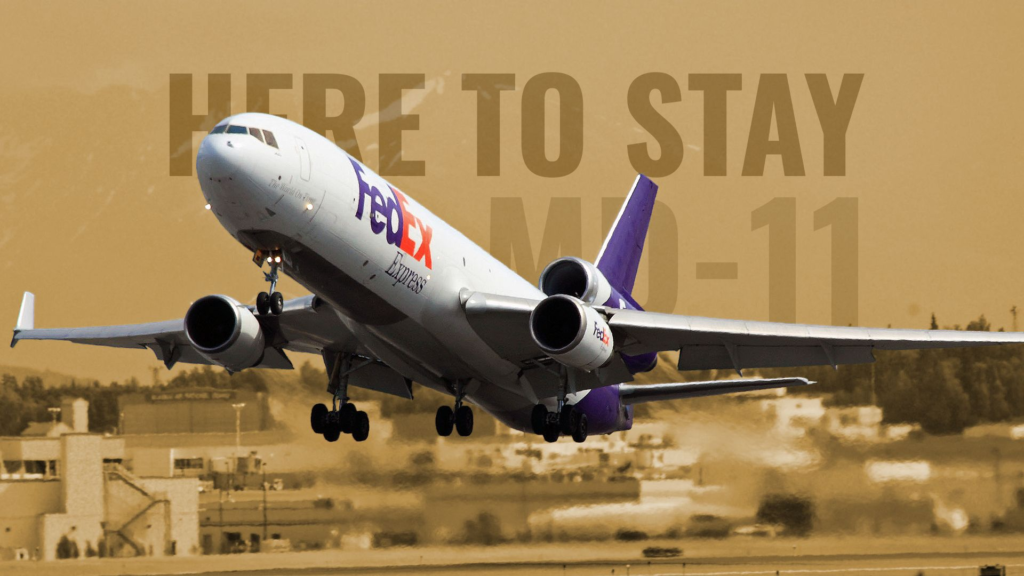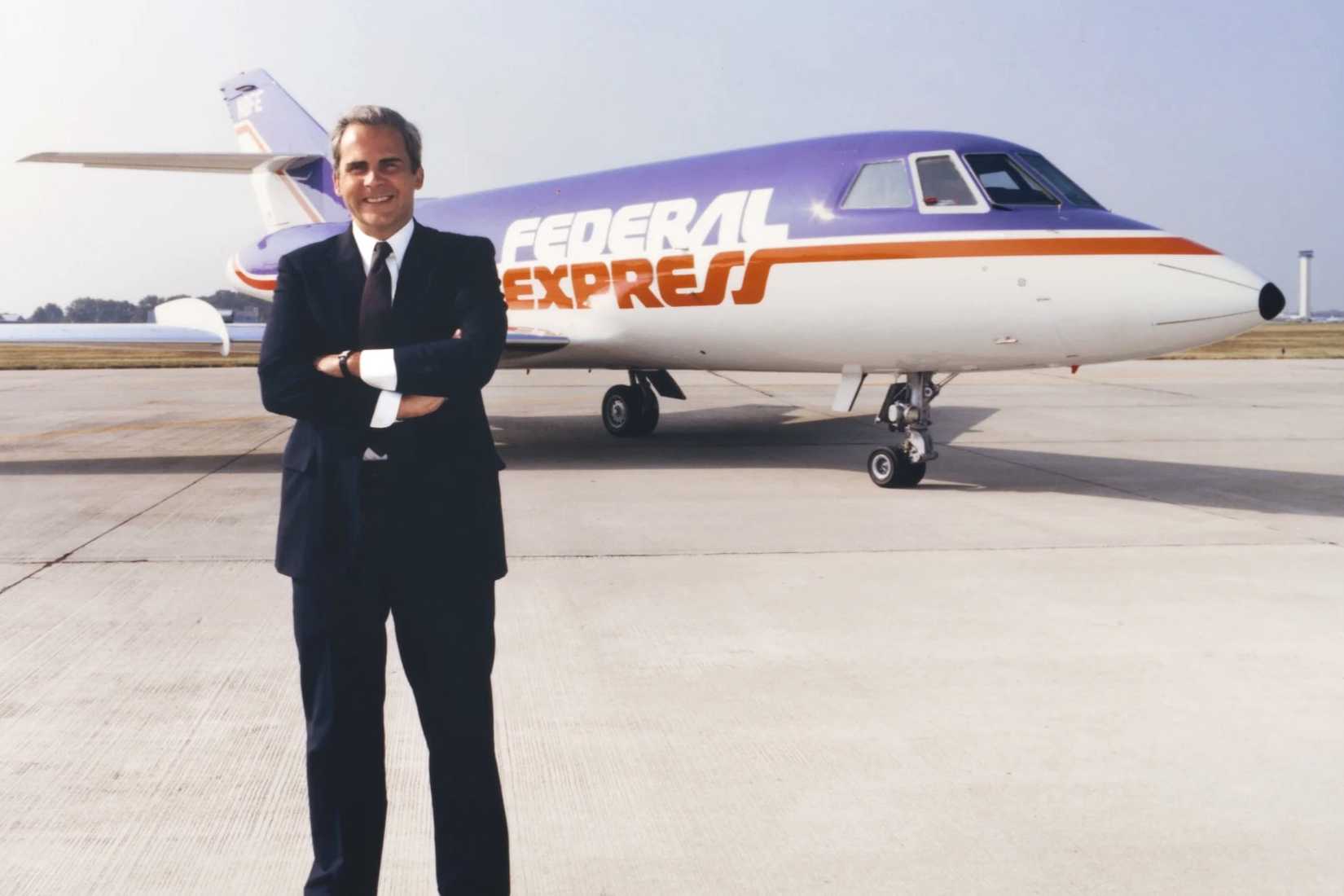For nearly three decades, the McDonnell Douglas MD-11 has been a distinctive sight in FedEx’s global operations. Its tri-jet silhouette represents a bygone era of commercial aviation. Yet, while most passenger airlines phased out the MD-11 years ago, FedEx continues to rely on it as a key part of its cargo fleet. In an industry driven by efficiency, modernization, and sustainability, lots of people wonder why the logistics giant hasn’t yet sent its MD-11s into retirement.
The answer lies in a combination of economics, reliability, and operational strategy. Far from being outdated relics, FedEx’s MD-11s continue to deliver strong performance on long-haul routes where their range and payload capacity remain advantageous. Understanding why FedEx continues to operate these aircraft requires a closer examination of the company itself, the MD-11’s enduring qualities, and how both align within FedEx’s global logistics network.
Who Is FedEx? A Global Leader in Air Cargo Logistics
Founded in 1971, FedEx has grown from a small overnight delivery service into one of the world’s largest logistics companies. Today, it operates in over 220 countries and territories, delivering millions of parcels and freight shipments every day. Its global reach is underpinned by Fedex Express, the company’s air cargo division, which serves as the backbone of its time-critical delivery operations.
The FedEx Express air network is among the most sophisticated in the world, connecting major hubs like Memphis, Indianapolis, Paris, and Guangzhou. This vast system allows FedEx to guarantee next-day or two-day delivery across continents, a feat that relies on an intricate balance of aircraft capacity, speed, and reliability. Maintaining a diverse and well-coordinated fleet is central to achieving that efficiency.
Within this fleet, aircraft range from the slightly smaller Boeing 757 to large intercontinental freighters like the Boeing 777F and the MD-11F. Each type has its niche, and FedEx has consistently optimized its aircraft mix to match global demand patterns. The company’s ongoing reliance on the MD-11 reflects both strategic pragmatism and the aircraft’s continued ability to fulfill specific, profitable roles.
The MD-11: A Workhorse of the FedEx Fleet
Introduced in the early 1990s, the McDonnell Douglas MD-11 was designed as a long-range, widebody trijet capable of carrying large payloads over intercontinental distances. It was developed as the successor to the DC-10, offering improved aerodynamics, a glass cockpit, and more efficient engines. Although the MD-11’s passenger service life was short, it found enduring success as a freighter, especially with FedEx, which became one of its largest operators.
FedEx began acquiring MD-11s in the late 1990s as passenger airlines phased out the type. Over the years, the company has operated more than 70 of them. The aircraft’s combination of high volume, capacity and range made it ideal for long-haul freight missions across the Pacific and Atlantic.
|
Specification |
Value (Airliners.net) |
|---|---|
|
Length |
202 feet 2 inches (61.6 m) |
|
Wingspan |
170 feet 6 inches (51.97 m) |
|
Height |
57 feet 9 inches (17.6 m) |
|
Maximum Takeoff Weight (MTOW) |
602,500 lb (273,294 kg) |
|
Maximum Payload |
116,025 lb (52,632 kg) |
|
Fuel Capacity |
38,600 US gal (146,173 litres) |
|
Range (Freighter / ER variant) |
3,910 nautical miles (7,242 km) |
While newer models such as the Boeing 777F offer superior fuel efficiency, the MD-11 continues to excel in specific roles. Its three-engine design allows it to operate from shorter runways and carry heavy payloads where other aircraft might face performance limits. For FedEx, that versatility has been a major reason to keep the MD-11 in active service.
Why the MD-11 Still Delivers: Efficiency Meets Reliability
One key reason FedEx persists with the MD-11 is that on certain routes and payloads, it remains economically viable. While it may burn more fuel per hour than modern twins, its capacity, volume, and range can make the cost-per-ton competitive, especially on longer “thin” routes where filling a newer widebody might be harder. The MD-11 can carry heavier and bulkier loads, making it useful in mixed-cargo markets.
FedEx also has a deep understanding of the operating requirements and optimum operating efficiency for the MD-11. The aircraft has been in service with the airline for years; crews, engineers, and planners have developed efficiencies in its execution. That institutional advantage reduces risk and hidden costs when compared to introducing a brand-new type of service.
Finally, the MD-11’s long service life is extended through modernization and continuous upgrades. While its base airframe dates back several decades, enhancements in avionics, navigation, and monitoring systems continue to keep it compliant with evolving regulatory and operational standards. That incremental upgrading helps preserve value and performance, pushing the retirement horizon further out.
Fleet Economics: Balancing Modernization and Value
Transitioning to a fully modern fleet is capital-intensive. New aircraft like Boeing 777 freighters come with high acquisition costs (often hundreds of millions per unit), and their integration involves training, spares, infrastructure, and financing burdens. For FedEx, keeping older aircraft like the MD-11 in service (as long as they remain airworthy) is a way to stretch capital efficiently.
Because many of the MD-11s in service are paid off or depreciated, their incremental cost (maintenance, fuel, crew) is the major factor, not capital cost. This gives them a cost baseline that newer aircraft must outperform before it makes sense to retire them. As such, FedEx can “earn out” the remaining value of the MD-11s over a longer span, postponing replacement until new types clearly provide better margins.
FedEx’s fleet orders (e.g., for new 777s, which hint at long-term replacement) reflect that only a portion of the MD-11 fleet will be retired at a time. This staged replacement approach reduces financial shock and allows the company to match capacity growth with demand. It allows the MD-11s to continue filling roles where they remain optimal, rather than forcing an all-at-once replacement.
Operational Flexibility and Network Strategy
In FedEx’s hub-and-spoke model, different aircraft types plug into different network segments. The MD-11 is particularly well-suited for long-haul “spine” legs, connecting major hub airports across oceans or continents. On those segments, its range and volume shine, and payload flexibility is advantageous.
Many of FedEx’s flights operate overnight or during low-demand windows, so the MD-11’s relative fuel disadvantage is mitigated. Off-peak hours reduce congestion costs and slot premium, letting the aircraft perform in favorable conditions. Also, routing constraints, airport limitations, or slot limitations at some destinations may favor the MD-11’s capabilities.
|
Aircraft Type (Planespotters.net) |
Current |
Future |
Avg. Age |
||
|---|---|---|---|---|---|
|
In Service |
Parked |
Total |
|||
|
ATR 42 / 72 |
50 |
8 |
58 |
3 |
20.8 Years |
|
Airbus A300 |
48 |
3 |
51 |
29.6 Years |
|
|
Boeing 737 |
8 |
8 |
20.1 Years |
||
|
Boeing 757 |
77 |
5 |
82 |
33.7 Years |
|
|
Boeing 767 |
140 |
7 |
147 |
5 |
6.4 Years |
|
Boeing 777 |
59 |
59 |
9.8 Years |
||
|
Cessna 408 SkyCourier |
24 |
9 |
33 |
1.8 Years |
|
|
McDonnell Douglas MD-11 |
24 |
5 |
29 |
31.8 Years |
|
|
Total |
430 |
37 |
467 |
8 |
17.4 Years |
Furthermore, FedEx can selectively deploy its MD-11s, sending them on routes where their economics still hold, and avoiding them on routes dominated by fuel cost sensitivity. This selective deployment allows the company to keep the MD-11s active but not force them onto routes where they would be uncompetitive.
Looking Ahead: The Future of the MD-11 in FedEx’s Sky
The writing is on the wall, FedEx’s recent orders of Boeing 777s and
Even as newer jets take over more of the network, the MD-11s may continue to serve in backup roles, on lower-frequency routes, or on less fuel-sensitive corridors. Their existing infrastructure, crew familiarity, and upgrade investments give them staying power longer than many outsiders might expect. But eventually, as margins tighten and carbon/fuel pressures intensify, the MD-11 is likely to be phased out.
In conclusion, FedEx’s continuing use of the MD-11 is not a failure to modernize, but a pragmatic decision grounded in real-world economics, operational nuance, and fleet transition pacing. It’s a reminder that in aviation, “old” doesn’t always mean “inefficient”, as long as the aircraft fits the mission and the math still works.


